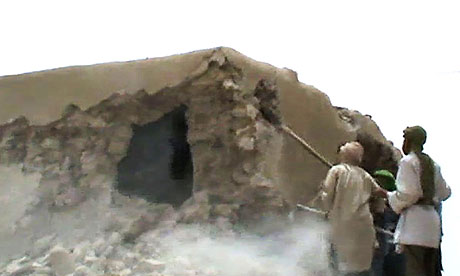Above: A space that doesn't rely on the visual: Jewish Museum, Berlin.
Michel Foucault conned the term of heterotopia to describe places of difference within society. These traditionally included sacred, forbidden or privileged places in a settlement, whist in the modern era our places of deviance can be seen as prisons, hospitals and mental institutions. Generally a heterotopia is anywhere that social values are mirrored but not actually possessed. Other examples include museums and libraries which reflect the idea of 'constituting a place of all times.' Contrasting those are the spaces that present the precariousness and fluidity of time such as carnivals, parades or fun-fairs. Foucault also looks at Panopticism and the exercise of power through architecture. Especially noted is Bentham's Panopticon prison where the inmates were subject to constant fear of being watched by their guards due to the layout of the building. It ensured that all cells could be visible from a large central guard tower and that from inside each cell the prisoner had no idea whether he was being watched or not. Though at the time this idea of control through imposing paranoia and self-awareness was a revolution for surveying heterotopia's, we now live in a country where panopticism is a part of daily life almost wherever we travel. Parallels are always made to George Orwell's 1984 in that we are constantly in fear of being watched and recorded by the cameras around us (because shops and councils just can't trust us not to do anything naughty).
 |
The species I have focused on for my essay is that of power. I think its interesting to study how spaces can be exploited by those looking to exercise there authority over others. I think it should be a principal of modern architects to recognise then rebel against the designers who only wish to trap people into conventional, overly-controlled lives. It could be seen as a transition from power spaces to play spaces or, as Bachelard might argue, an design revolution against modernism, industry and capital.








































